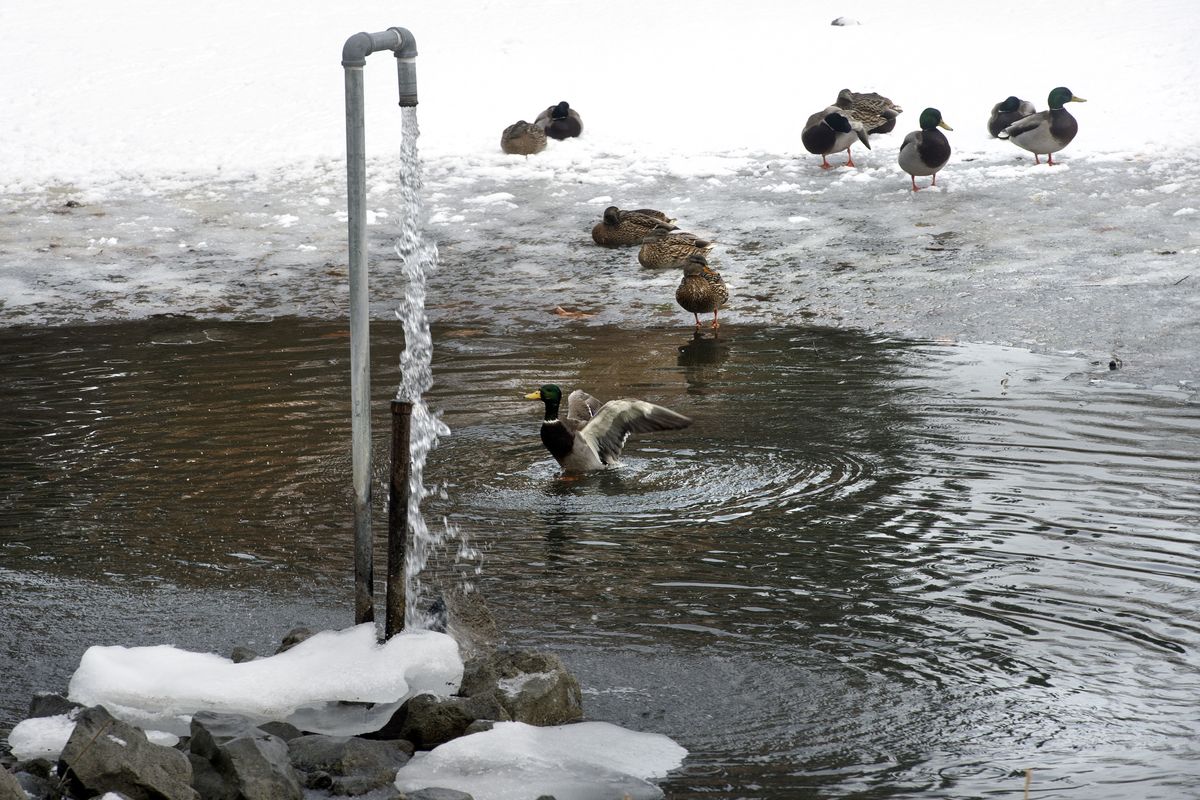Spokane’s Cannon Hill Park has pondwater predicament

Twenty-four hours a day for most of the year, water pours from a spigot on the south side of the Cannon Hill Park pond.
“We’re losing millions and millions of gallons out of that pond every year,” said City Councilman Mike Allen, who serves on the Park
Board. “From a water-conservation standpoint, we have to address the amount of water we’re losing.”
Last year, the water meter at the park measured 18 million gallons and cost $20,000.
In 2009, the meter showed 28 million gallons used; that’s more water than 200 homes use in a typical year. Earlier this month, the Park Board voted to borrow $277,000 from the state Department of Ecology to line the pond and slow the water loss, beginning next year.
While the amount of water used in the pond is troubling, Park Director Leroy Eadie said, it does keep the pond fresher than Mirror Pond (the duck pond) at Manito Park. To prevent stagnation, the city will study installing a new irrigation system that would draw water from the pond, allowing the city to continue to add clean water.
Park operations director Tony Madunich said the Cannon Hill pond historically was maintained as a skating pond, freezing easily because of its shallow depth, about 18 inches. Mirror Pond is about 6 to 8 feet deep. Another natural pond at Lincoln Park is much deeper than that, he said.
A couple years ago, park staff shut off the spigot as an experiment. In about four to six weeks, the shores moved in by about 20 feet. The pond has a population of small fish, turtles and frogs. Madunich suspects fish don’t live long enough to get big in the pond.
“What fish are there end up being easy pickings,” Madunich said.
Cannon Hill Park was designed by the famed Olmsted Brothers, a New York landscape architecture company that laid the groundwork for much of the city’s park system. The land previously was the home to a brick company that used clay deposits found on the land.
The pond was first labeled a lake by the Olmsted Brothers, and it covered much of the east half of the park, up to a basalt bridge that flowed into a wading pool that covered much of the western part of the park, according to original park designs. Another basalt bridge separated the wading pool and another small pond. Over the years, park workers struggled to keep the lake and wading pool filled. Eventually, the city let the wading pool and about half the lake dry up. The bridges still stand.
Lining the pond isn’t the first effort the city has made to stop pumping so much water into the pond.
About five years ago, the city built stormwater gardens along Lincoln Avenue and connected them to the pond. During heavy rainstorms and snowmelts, water filters through the gardens and drains into the pond. The idea was to slow the flow of untreated stormwater into Spokane River and assist in keeping the pond filled.
“One of the things that we have observed is there’s a fairly minimal amount of water that comes in there,” City Engineer Mike Taylor said.
But some water does make it to the pond. About 300,000 gallons flowed into the pond from the Lincoln Street storm gardens from August to the end of last year, according to data recently compiled by the city.